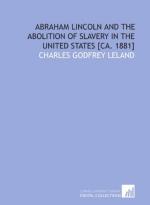|
This section contains 5,840 words (approx. 20 pages at 300 words per page) |

|
SOURCE: Luis, William. “Fiction and Fact: The Antislavery Narrative and Blacks as Counter-Discourse in Cuban History.” In Literary Bondage: Slavery in Cuban Narrative, pp. 1-17. Austin: University of Texas Press, 1990.
In the following excerpt, Luis discusses the historical and social conditions in Cuba that made the condemnation of the slave trade and slavery itself a growing concern in nineteenth-century Cuban literature.
Fiction
Antislavery narrative refers to a group of works written mainly during the 1830s, an incipient and prolific moment in Cuban literature. They include ex-slave Juan Francisco Manzano's Autobiografía (written in 1835, published in England in 1840 and in Cuba in 1937), Anselmo Suárez y Romero's Francisco (written in 1839, published in 1880), and Félix Tanco y Bosmeniel's Escenas de la vida privada en la isla de Cuba (written in 1838, published in 1925) and “Un niño en la Habana” (written in 1837, published in 1986).1 These early works were requested by...
|
This section contains 5,840 words (approx. 20 pages at 300 words per page) |

|


